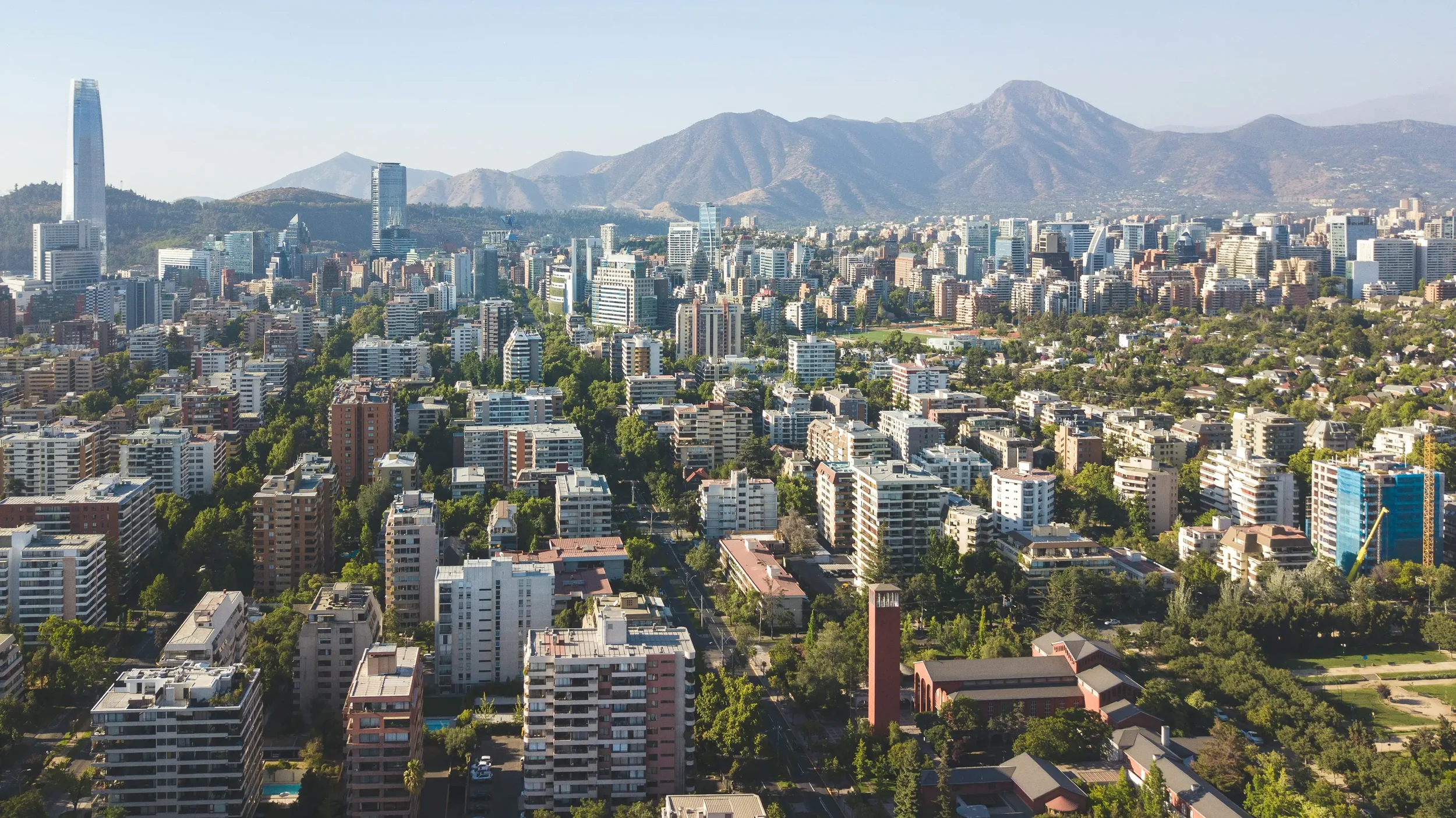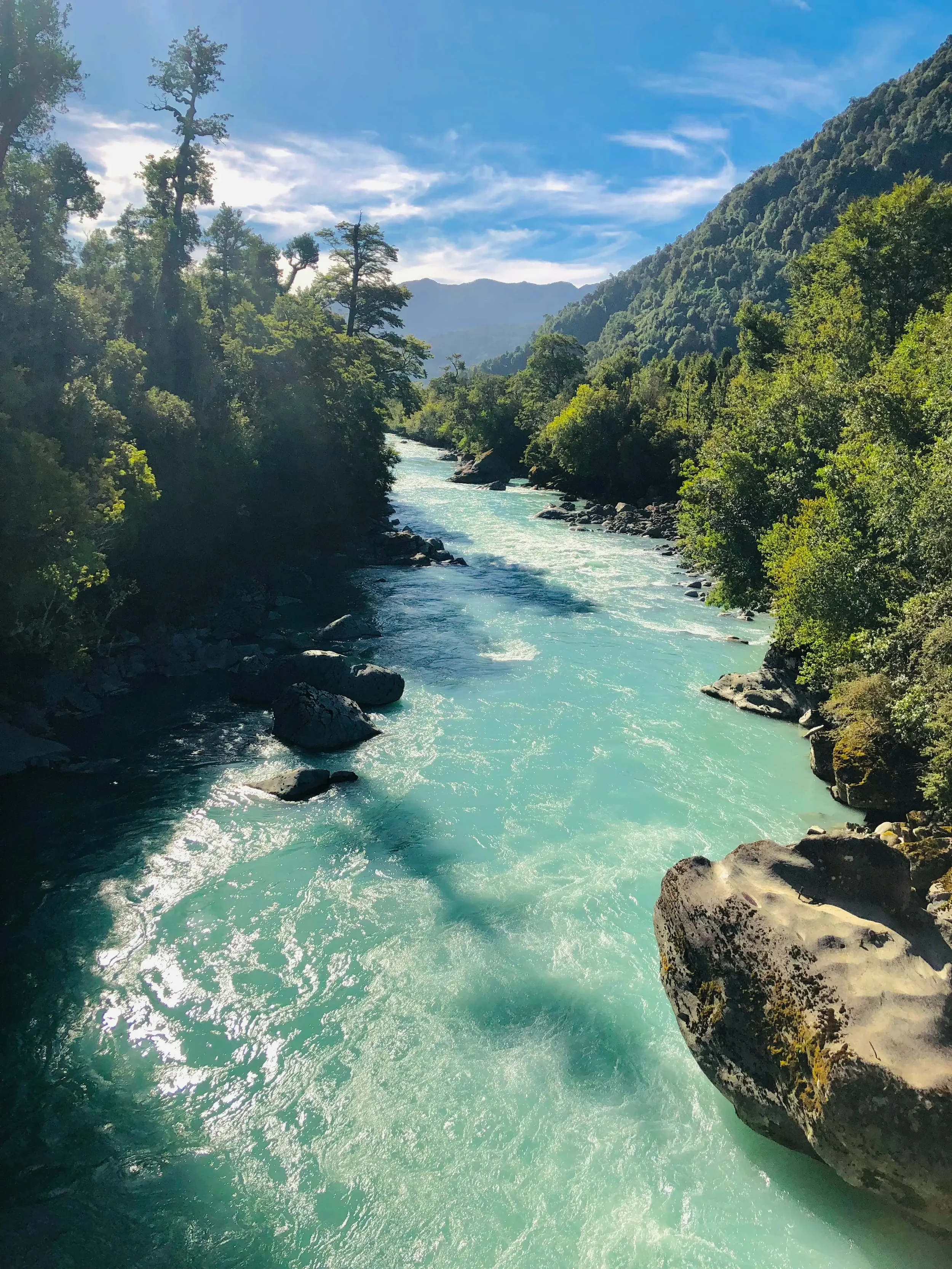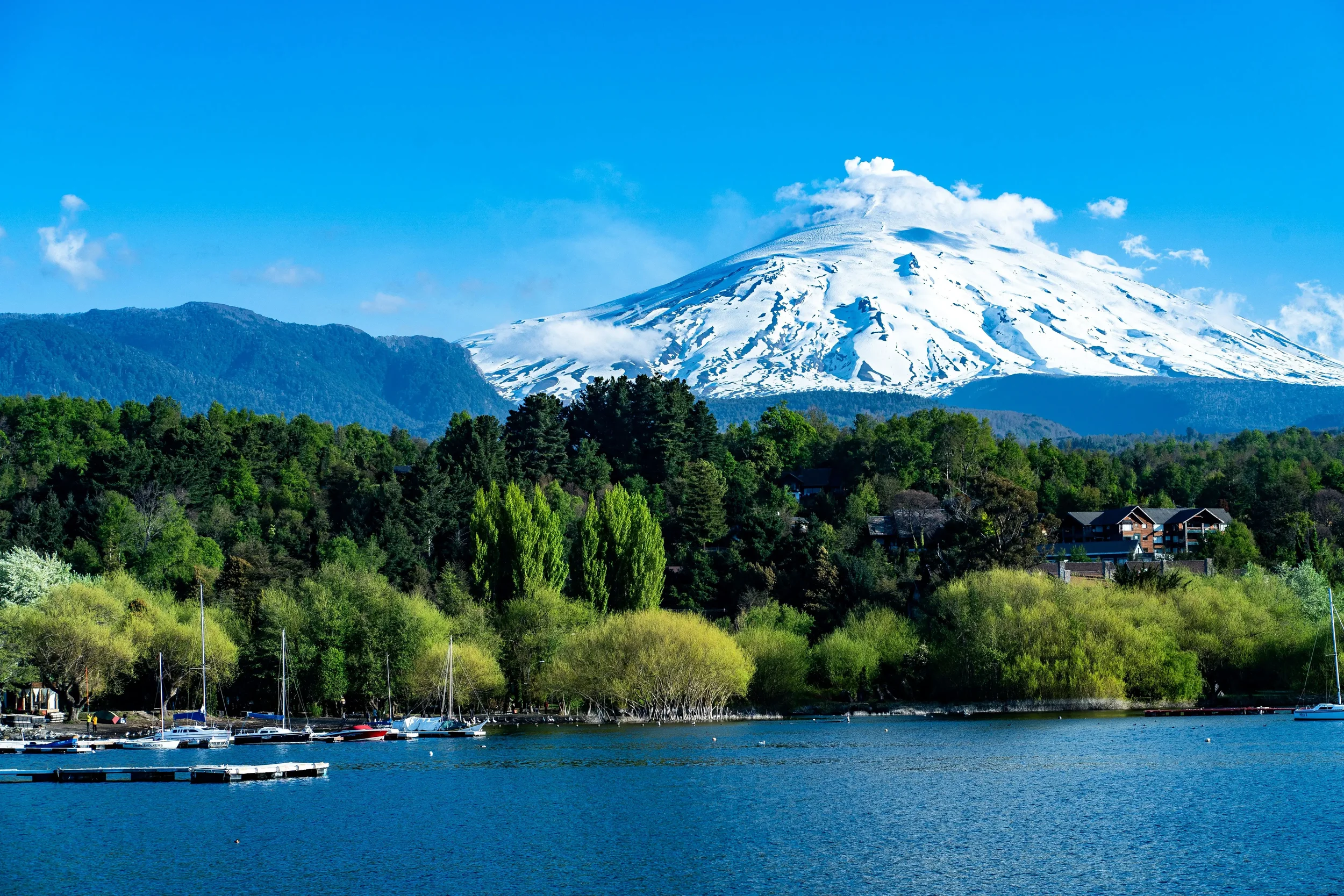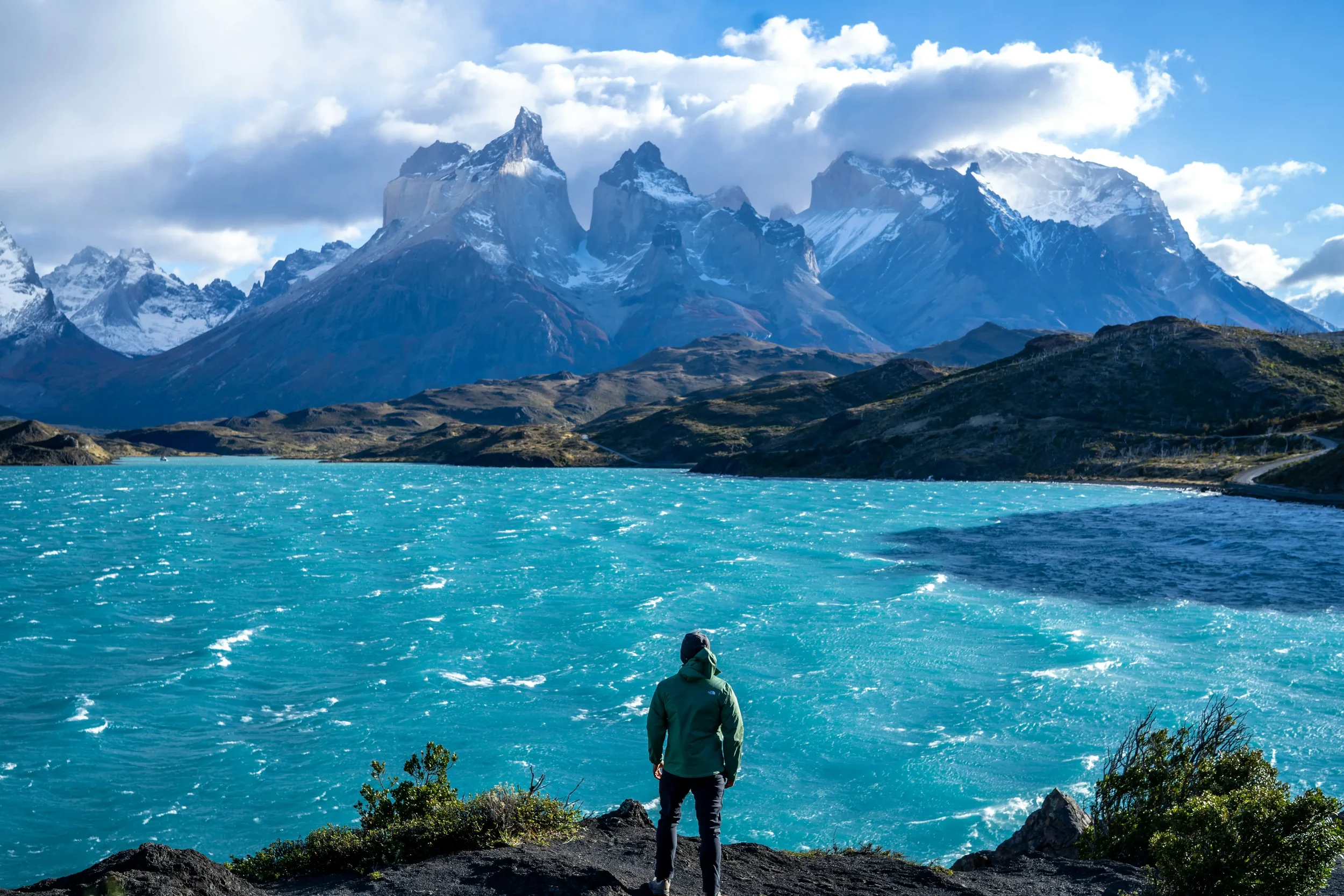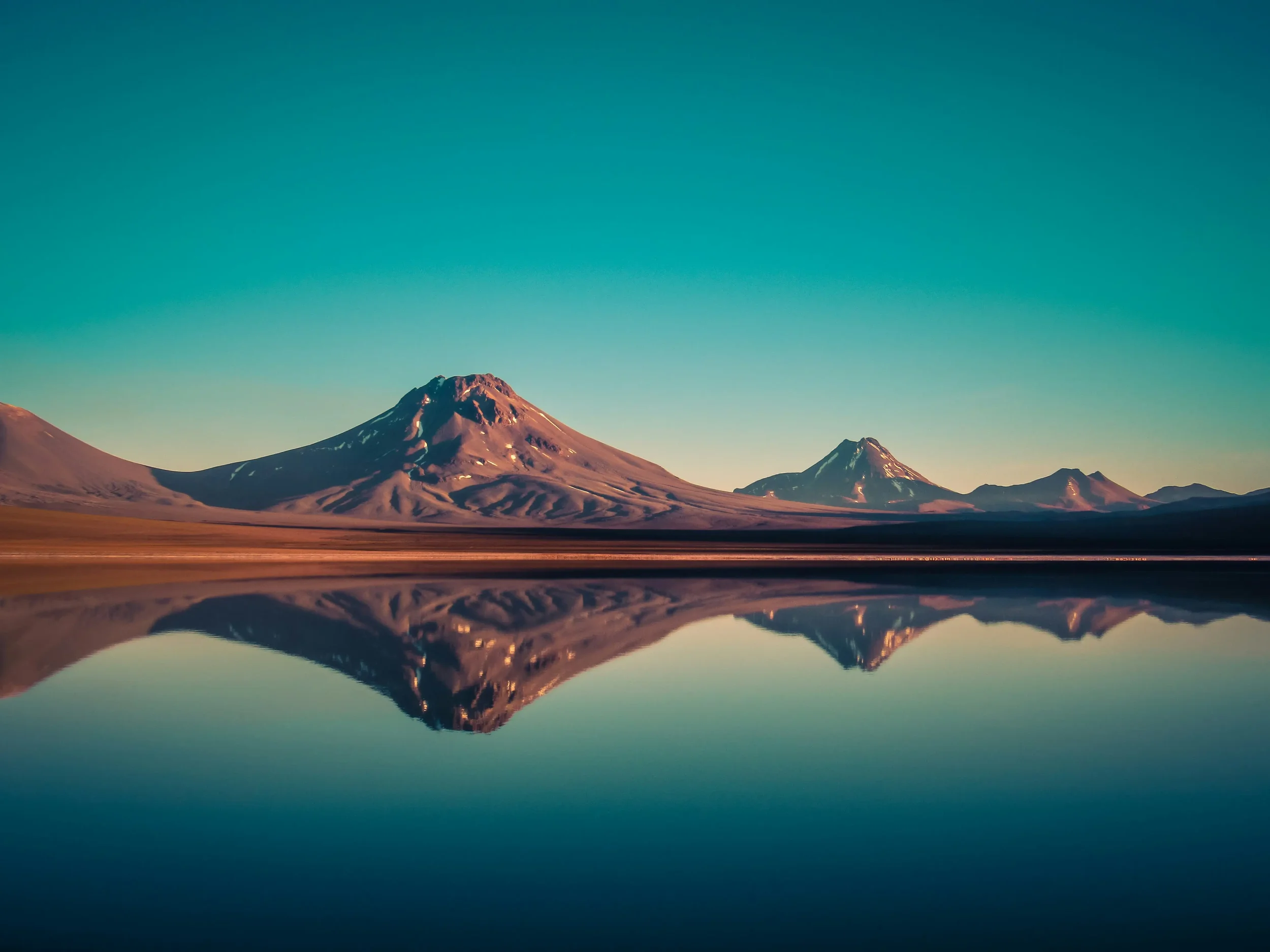CHILE
-
Chile, a narrow ribbon of land stretching over 4,300 km (2,670 miles) along South America's Pacific coast, boasts an incredible range of landscapes, from the dry, otherworldly Atacama Desert in the north to the wild glaciers and granite peaks of Patagonia in the south. In between, you’ll find volcanoes, salt flats, lakes, surf beaches, vineyards, and one of the continent’s most striking capital cities.
Most travelers start off in Santiago, nestled against the Andes and full of museums, markets and bohemian neighborhoods. It’s also an easy base for wine country, surf trips, or even skiing in winter. From there, many head north to the Atacama for stargazing, hot springs and surreal desert views, or south to Patagonia’s national parks, especially Torres del Paine, with its multi-day treks and dramatic scenery.
Backpackers should keep in mind: Chile is long and travel distances are huge. Buses are excellent but slow, and flights can save serious time if your budget allows. With landscapes this varied, the country is full of contrasts — be prepared for the climate to shift as quickly as the scenery.
-
Chile's extreme length means its climate varies dramatically from north to south. There are generally four distinct seasons, but their impact differs greatly by region.
Overall Best Time to Visit: The Chilean summer (December to February) is ideal for exploring Patagonia and the southern regions. For the Atacama Desert and central Chile, the shoulder seasons (September-November and March-May) often offer pleasant temperatures and fewer crowds.
Regional Breakdown:
North (Atacama Desert):
Year-round: This is one of the driest places on Earth, with almost no rainfall. Days are sunny and warm (around 25°C-30°C / 77°F-86°F), but nights can be surprisingly cold, often dropping to near freezing, especially at higher altitudes.
Summer (December - February): Hottest days, but still cold nights. Popular time for stargazing.
Winter (June - August): Colder nights, but usually clear days.
Central Chile (Santiago, Valparaíso, Wine Valleys):
Mediterranean Climate: Distinct seasons.
Summer (December - February): Hot and dry, with temperatures often reaching 30°C-35°C (86°F-95°F). Ideal for beaches and outdoor activities, but cities can feel very warm.
Autumn (March - May): Mild and pleasant, with comfortable temperatures and less rain. Great for wine tours.
Winter (June - August): Cooler and wetter, with temperatures around 5°C-15°C (41°F-59°F). Snow falls in the Andes, making it ski season.
Spring (September - November): Pleasant and mild, with wildflowers blooming.
Lake District (Pucon, Puerto Varas):
Temperate Oceanic Climate: Resembles the Pacific Northwest of the US.
Summer (December - February): Mild and pleasant, with temperatures around 15°C-25°C (59°F-77°F), but can be rainy. Best for hiking and outdoor adventures.
Winter (June - August): Cold and rainy, with significant snowfall in the mountains. Popular for skiing.
Patagonia (Torres del Paine, Punta Arenas, Ushuaia):
Subpolar Oceanic Climate: Highly unpredictable weather, strong winds are common.
Summer (December - February): Mildest temperatures (around 10°C-20°C / 50°F-68°F) and longest daylight hours. This is peak trekking season, so expect crowds and higher prices. Be prepared for all four seasons in one day.
Shoulder Seasons (November, March): Still good for hiking with fewer crowds and slightly less wind, but weather can be more volatile.
Winter (June - August): Cold, windy, and snowy. Many services close, and trails may be inaccessible.
Important Tip: Due to the variations, it's essential to pack layers for any trip to Chile, even in summer, especially if you plan to travel between regions.
-
UK, EU & US passport holders:
Citizens from the UK, EU, and US generally do not need a visa for tourist stays up to 90 days. Upon arrival, you will typically receive a tourist card (tarjeta de turismo), which is an A5-sized white form. It is crucial to keep this form safe as you must present it when leaving the country. If lost, you can request a copy online from the Chilean investigative police (PDI) or visit a local PDI office.
Important Notes:
Passport Validity: Your passport must be valid for at least six months beyond your intended departure date and have at least one blank page.
Proof of Funds & Onward Travel: You may be asked for proof of sufficient funds to cover your stay and proof of onward airline tickets.
Extension: It is possible to apply for an extension of your tourist stay for an additional 90 days. This must be done at a Migración office before your initial 90-day period expires. The process typically involves submitting an application form, a copy of your passport, and paying a fee. Extensions are not guaranteed.
Overstay Fines: Overstaying your permitted time will incur daily fines and may lead to difficulties entering Chile in the future.
Easter Island (Rapa Nui): To enter Rapa Nui, you must complete an entry form, show a return ticket, and provide a reservation registered with SERNATUR (the national tourism service) or an invitation letter.
-
Currency: Chilean Peso (CLP)
Credit/debit cards are widely accepted in cities and larger towns. However, cash is essential for smaller purchases, local markets, public transport (if not using a top-up card), and in more rural areas.
Best way to access money:
Travel Cards: Using a fee-free travel card like Revolut, Wise or Monzo often provides the best exchange rates and can help avoid excessive ATM fees.
ATMs: ATMs are common in urban areas. While most banks charge a fee (around 2,500-7,000 CLP / $2.50-$7 USD), some, like BancoEstado, might have slightly lower fees. Withdrawal limits can be restrictive, so it's often more economical to take out larger amounts less frequently.
Exchange Houses (Casas de Cambio): Available in major cities. Compare rates, as they can vary. Avoid exchanging money at the airport unless absolutely necessary, as rates are usually less favorable.
Typical daily backpacker budget: CLP 30,000–60,000/day ($30–$60 USD) – This can cover budget hostel dorms, street food or local eateries (picadas), public transport, and some free activities. Costs will be significantly higher if you plan on multi-day treks in Patagonia, visiting Easter Island, or frequently dining in mid-range restaurants. Patagonia can easily push daily costs to $70-$100+ USD.
Tips:
Menú del Día: Many restaurants offer a menú del día or almuerzo (lunch menu) for a fixed, affordable price, typically including a soup, main course and a drink.
Supermarkets: Shop at supermarkets (such as Lider or Jumbo) and cook some of your meals, especially if staying in hostels with kitchens, to save money.
Public Transport: Santiago has an excellent metro system. For buses, you'll need a "Bip!" card, which can be purchased and topped up at metro stations and kiosks.
Camping: In national parks, especially Patagonia, camping is a popular and more budget-friendly accommodation option than refugios or hotels.
Book Tours Locally: For tours in places like San Pedro de Atacama, compare prices and book locally, as rates can vary.
Main Destinations



